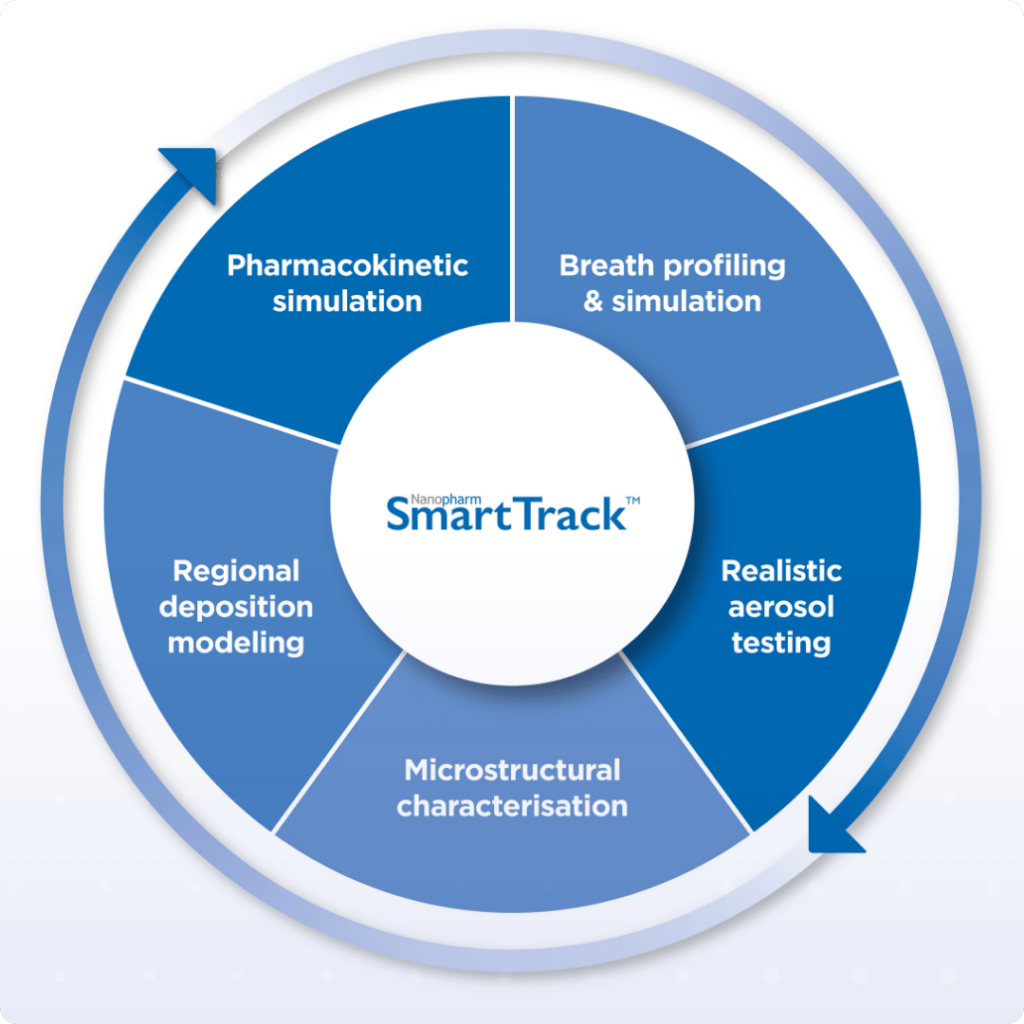
Generic Bioequivalence
Demonstrating the bioequivalence of generic nasal spray drug products requires specialized testing capabilities under recently updated regulations. Those with an in-depth understanding of the specialized testing requirements, including Morphologically-Directed Raman Spectroscopy (MDRS) and dissolution testing, that meet current bioequivalence requirements for generic nasal products are few. Nanopharm’s expert scientists are dedicated to advancing nasal and inhaled drug products and have the specialized cGMP testing capabilities combined with extensive scientific experience to deliver on these requirements.
Nanopharm Nasal Generic Bioequivalence Analytical Services
The U.S. FDA has added MDRS and dissolution testing to the analytical testing requirements for demonstrating the bioequivalence of generic nasal spray products and their reference product. Nanopharm is your nasal and inhaled drug product development specialists that can bring years of experience to every customer project. As experts in the nasal and inhaled drug space, Nanopharm has been attending U.S. FDA workshops and working with the agency to develop applicable test methods to add to their guidance on bioequivalence requirements Nanopharm has published a number of papers with regulators to help develop these methodologies following FDA sponsoring research performed by Nanopharm.
MDRS provides automated chemical and morphological characterization of multi-component formulations. It also defines API particle size and shape distributions.
Dissolution is a critical tool in determining the impact of submicron particle size on the dissolution rate of a drug for optimization of the formulation and is orthogonal to MDRS.
Nanopharm can utilize proprietary dissolution / IVRT approaches for comparative API release rate data, which is useful in product development.
Morphologically-Directed Raman Spectroscopy (MDRS) for Nasal Product Bioequivalence
Nanopharm’s Morphologically-Directed Raman Spectroscopy (MDRS) provides chemical and morphological characterization of the individual components of a sample containing multiple components. MDRS integrates automated particle imaging and Raman micro spectroscopy and can rapidly confirm the particle size of the active pharmaceutical ingredients (API) in a pharmaceutical formulation. For generic nasal spray products, this allows the accurate comparison of the size and shape of generic APIs with reference drugs or generic test formulations to support in-vitro bioequivalence. MDRS also allows the scientists to consider the circularity, convexity, and elongation of particles in a formulation for identification and quantitation. This important technique can be used to analyze chemical composition, as well as proportions and morphology of individual chemical components of complex nasal formulations. MDRS can also help Nanopharm scientists to assess the impact of process steps on API or excipients found in the nasal spray formulation. MDRS results can help to direct formulation strategy and can explain changes in aerosol and dissolution properties that can ultimately contribute to predictive pharmacokinetic (PK) performance. Ultimately Nanopharm can use MDRS to demonstrate the in-vitro bioequivalence of new generic products with ease in accordance with current regulatory requirements.
Nasal Spray API Particle Size by Dissolution
Nanopharm employs sophisticated proprietary dissolution techniques, complemented by in-vitro release testing (IVRT), to discern microstructural alterations by precisely regulating dissolution through diffusion-mediated transport. This controlled dissolution process establishes a boundary layer, a crucial consideration due to the limited fluid volume available in the nasal cavity for the dissolution and diffusion of active pharmaceutical ingredients (APIs).
Nanopharm employs its exclusive immersion cell system to evaluate the integrated dissolution and release rate of a representative dosage form through a membrane filter, thereby restricting the fluid available for dissolution. Using the IVRT system, Nanopharm’s researchers can capture and disperse the dosage, facilitating an investigation into the permeation of solid particles, which may not be constrained by dissolution kinetics. It’s worth noting that IVRT approaches applied to topical semi-solid dosage forms have gained widespread acceptance by the U.S. FDA.
Nanopharm dissolution / in-vitro release testing (IVRT) for Inhalation Products
Microstructural characteristics of API interactions are critical to understanding inhalation product formulations. Nanopharm can utilize proprietary dissolution techniques, in combination with in-vitro release testing (IVRT), to identify critical microstructural alterations in diffusion mediated transport that can be used to represent the fluid naturally in the lungs that diffuse the drug in-vivo.
Our exclusive immersion cell system is used to evaluate the integrated dissolution and release rate of the dosage form through a membrane filter, thereby restricting the fluid available for dissolution. Nanopharm’s scientists can capture and disperse the dosage, facilitating an investigation into the permeation of solid particles, which may not be constrained by dissolution kinetics. This application of dissolution immersion cell technology combined with IVRT analysis provides Nanopharm scientists with a data driven perspective that can support robust formulation development.
Nanopharm Nasal Generic Bioequivalence Specialized Capabilities
Nanopharm’s cGMP analytical laboratories are fully equipped to perform the specialized testing required by current regulatory guidance to demonstrate the bioequivalence of generic products to a market reference product. The specialized analytical testing, including dissolution and MDRS, are performed by our experienced team of scientists dedicated to the development of OINDPs.

